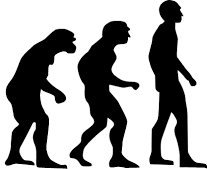Signs of Microevolution in Humans

October 27, 2020
It’s no surprise that there is increasingly more evidence of microevolution in humans in recent times, especially considering that the world’s population has increased eight-fold during the last two centuries. Drastic changes and improvements in lifestyle in the modern inevitably play their part in the changes occurring in humans. So what are some examples of the microevolutionary changes in humans lately?
The median artery is a vessel found in the human forearm and hand that is considered an embryonic structure (forms in the womb). It usually disappears after the radial and ulnar arteries develop and replace it, but an Australian study published in September 2020 revealed that the median artery is kept by one in three people for their entire lives. In the future, this extra artery, which improves blood flow, will be retained by more humans and become a common feature.
Bones are less dense than they were 12,000 years ago. This is around the time that humans stopped nomadic hunting and started to farm or raise livestock. According to a study in 2015, the porous bones that are found at the ends of longer bones, or trabecular bones, are becoming lighter. The change in lifestyle from hunting to farming allowed bones to be lighter and more durable. The increasing sedentary levels in recent decades have been attributed to a lighter, more fragile trabecular bone in humans.
Naturally, changes in diet induce significant changes to anatomy. Softer foods need less chewing and human jaws reflect this. Human jaws are getting smaller and shorter, which leads to less room for teeth such as wisdom teeth. Early humans like hunter-gatherers or early farmers all had their third molars present in their oral cavities, but this isn’t the case for modern humans. Fewer and fewer people are born with wisdom teeth as human jaws gradually evolve to become smaller. Larger jaws in earlier humans meant that the wisdom teeth were rarely impacted but smaller modern jaws with less room for third molars means that more people need a trip to an oral surgeon to remove them.
In summary, there are many recent alterations in humans over the years, which is not a mind-blowing fact when taking account of how much human lifestyles have changed and how much the population has grown. The examples of microevolution listed are just a few of the many changes in humans that scientists have discovered recently.

